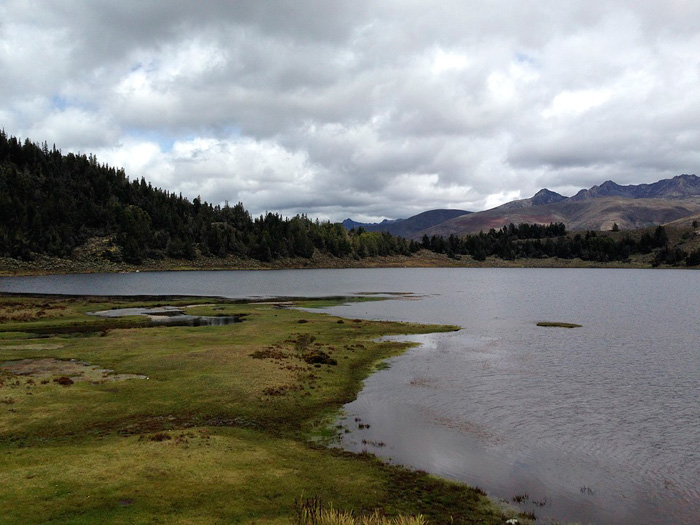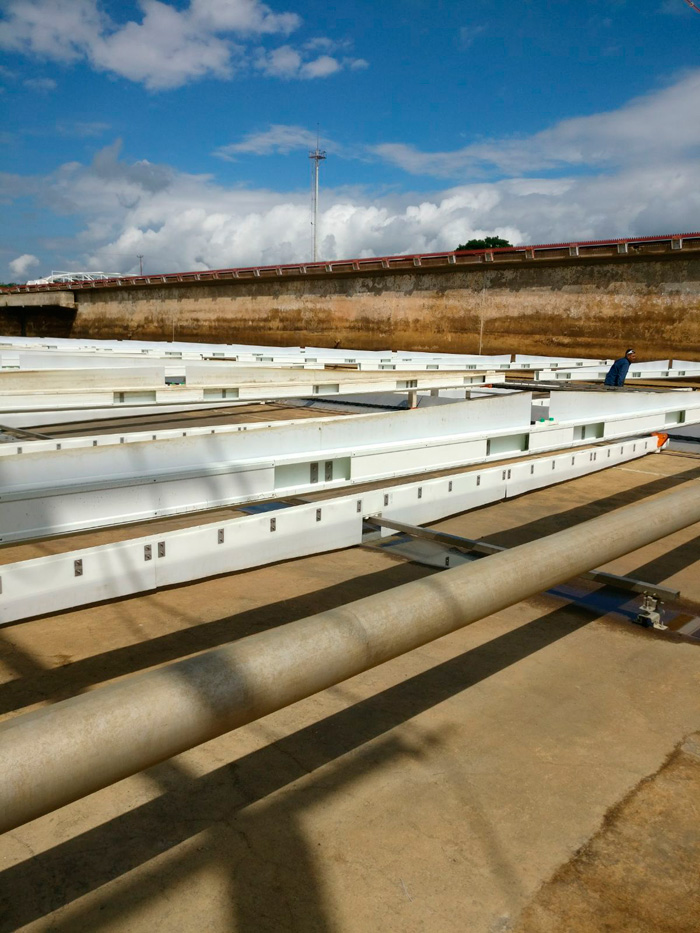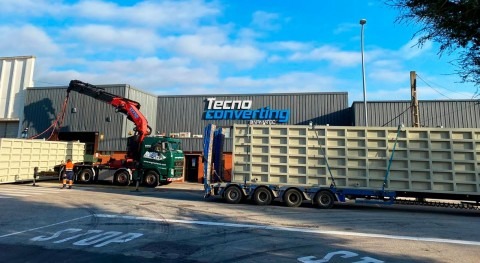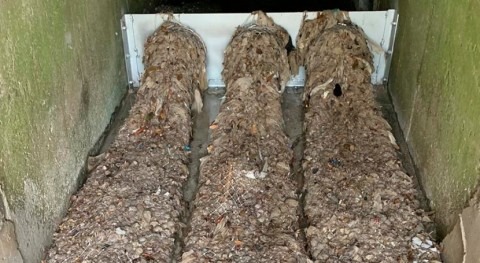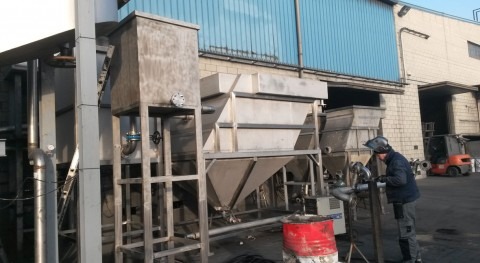Latin America is one of the world's regions most threatened by climate change. This undeniable fact is becoming an increasingly more urgent economic and social challenge in those countries where the effects of this phenomenon are more frequent.
The entire South American continent is experiencing extreme meteorological events, with droughts that last for months alternating with long periods of heavy rainfall. This translates into a decreased water supply, degradation of water quality and changes in quality patterns due to the variations in flows. These unstable and unpredictable meteorological conditions brought about by climate change take a toll on the water cycle. As a result, cities are suffering an unprecedented water crisis, affecting water infrastructure and in particular water treatment plants.
But climate change is not the only problem in Latin America: urban sprawl, the demand for agricultural production, the need for policy development and greater political commitment, are all part of a situation where the region is, more than ever, dependent on water. Venezuela is an excellent example of this crisis.
Water management in Venezuela
Although in Venezuela water shortages are not as serious as in other Latin American countries, we must take into account two major problems: the uneven distribution of water resources (85% of the population concentrates in the north of the country, with less than 10% of the water resources); and inadequate waste water management, resulting in pollution of surface and groundwater. The situation is exacerbated by a lack of maintenance of some of the infrastructure, squandering of water and energy by the public, companies and public entities, and limited investment in the sector.
Although Venezuela has a comprehensive legal framework to regulate water resources, it is not as effective as it should be. The most important pieces of legislation are: the Constitution of the Bolivarian Republic of Venezuela, which establishes water as public good and its protection; the Organic Law on the Environment, which regulates integrated water resource management and refers to safeguarding the quality, quantity and availability of water as a mechanism to sustain the water cycle, as well as waste water treatment and reuse, and the protection of river basins and the soils in them. The country also has a Water Law that includes integrated water resource management, defines access to water as a human right and a social good, and describes programmes and projects for the preservation of river basins, among other aspects. Finally, the Organic Law on the Provision of Drinking Water and Sanitation Services establishes the framework for water services.
The pressure to build new infrastructure to address the water demand requires large investments
The institutional framework in the water and sanitation sector in Venezuela concentrates many competences at the national level. In fact, the last law was approved in 2001 to decentralise the provision of services and separate the entities responsible for management, regulation and provision of services in the sector. The national water company HIDROVEN, provides water and sanitation services to more than 70% of the Venezuelan population, while state companies, the Corporación Venezolana de Guayana — a public regional development company — some municipalities and community organisations provide services to the remaining 30%.
Population growth in Venezuela has declined in the past two decades to 3.5% per year. Even so, the pressure to build new infrastructure to address the water demand requires large investments, because population centres are very far from water sources, a common problem in most of Latin America. The development of water infrastructure in the country gained momentum with the creation of the National Institute for Water Services Infrastructure [Instituto Nacional de Obras Sanitarias, INOS] in 1943. The following decades saw the construction of the main aqueducts in Venezuela, including the one in Caracas, one of the most complex in the world. It transports 22 tonnes of water over a height if 1000 metres every second, which then undergoes treatment at one of three drinking water treatment plants: La Mariposa (4,200 l/s), La Guairita (7,500 l/s) and Caujarito (12,000 l/s).

Caracas
Over the past few years, the Venezuelan Government has carried out numerous infrastructure upgrades, mainly in waste water treatment plants, strengthening access to drinking water and sanitation in the country. However, the water sector in Venezuela is facing a decentralisation process since 1991 and is now in dire straits: citizens can go for months without drinking water as a result, according to experts, of lack of investment and maintenance of water infrastructure in the country. It is not something new: facilities are obsolete, most of them dating from the 1960s and 1970s; also, water quality at the sources has deteriorated due to a sprawling population growth, contributing to discharges into the drainage basins of the main reservoirs. A major overhaul programme is needed.
To this effect, the Venezuelan HIDROVEN has been working for some time to overhaul and upgrade the main plants in the country with resources from the IADB and the CAF, in order to improve water quality. Three of the most important plants upgraded were La Mariposa, Caujarito and La Guairita, located in Caracas.
Sludge scrapers in the Caujarito Plant
Changing the future of water infrastructure in Caracas
Venezuelan infrastructure are ageing and lack investments, and that can be seen in the technology to remove solids in settling tanks, now obsolete; as a result, effluent water is not suitable for reuse due to its high turbidity.
For that reason, the Venezuelan Government decided to upgrade old water treatment facilities. In 2013, Electrotécnica SAQUI, a construction company specialised in designing and building drinking water and waste water treatment plants was hired by HIDROCAPITAL (a subsidiary of HIDROVEN), to refurbish and expand the largest plant treating drinking water from the Caracas aqueduct, the Caujarito Plant. In 2015 a public tender was issued to install new scraper equipment in the three plants in Caracas (La Mariposa, La Guairita and Caujarito), and Electrotécnica SAQUI, responsible for the design of the proposal, worked together with the Tecnoconverting team to find a solution that was technically suitable, adapted to the limitations of the local market and, above everything, economically competitive, which finally resulted in the award of the contract. The installation of the new equipment to remove sedimented sludge (scrapers) in the settling tanks in the three plants in Caracas started in 2016. This is ongoing using the equipment supplied by the Spanish company TecnoConverting, according to the engineer Isabel Quiroga, project manager for Electrotécnica SAQUI: 'We have built a valuable professional relationship based on commitment, professionalism and excellence, getting them involved in other projects by the company, such as the PP Alejo Zuloaga and ongoing tenders'.
Once the water treatment plants were operating, the quality of the water output increased to a great extent
The upgrade implemented by the government consisted of replacing a total of 20 scraper bridges with TecnoConverting's bottom scrapers, a well known technology that uses a traction system with a central shaft and two wheel gears at the ends which, when they turn, move two longitudinal chains that have fiberglass-reinforced polyester blades attached to the chain. Having those blades every 2 metres approximately allows removing a much larger amount of sludge than with the older mobile bridges.

Sludge scrapers in the La Guairita Plant
One of the obstacles Tecnoconverting found was that the tanks were 20 metres wide. Given the restrictions in the country, it was not possible to build concrete walls to divide the tank into two smaller ones, 10 metres wide; so an intermediate supporting structure was built in stainless steel to allow both scrapers to work at the same time, without having a wall in the centre.
Once the water treatment plants were operating, the quality of the water output increased to a great extent; so much so that the Venezuelan Government sent a message of congratulations.




